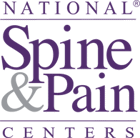
The spine is a vital structure that supports the body while providing enough flexibility for movement. The spine is divided into the neck (cervical area), middle back (thoracic area), and lower back (lumbar area). Areas that sustain a lot of twisting and bending, such as the lower back, are most likely to get injured. It is estimated that 80% of the population will have lower back pain, or lumbago, in their lifetime.
80% of adults will experience back pain in their lifetime. Take the FREE back pain risk assessment to understand your risk factors, and aid in preventing complications in the future.
While some back pain episodes improve with rest, anti-inflammatories and other conservative treatments, back pain can become severe and chronic. A pain specialist can treat this type of pain with minimally invasive procedures that calm the pain and allow you to strengthen and recondition.
Contact National Spine & Pain Centers to schedule an appointment with an affiliated pain specialist for Back Pain treatment today.
Most cases back pain can be traced to one of the following issues:
Back pain may be episodic, where a person flares up and recovers, or it may become chronic and last several weeks or months. It usually worsens with bending, twisting, lifting, standing or walking. Sometimes, as with rheumatoid arthritis, movement improves the stiffness while excessive rest worsens the pain.
Common findings in people with back problems:
Situations where there is pressure on the spinal cord are considered emergencies. You should see a doctor immediately if you have:
Back pain is often linked to an injury or to spinal degeneration, a process of wear-and-tear of the joints, discs, ligaments, and bones in the spine. Over time, one back problem can lead to other problems, creating a domino effect of cumulative issues.
Issues that increase the risk for back pain:
A diagnosis for back pain requires an evaluation from a pain specialist and a complete neurologic examination. The presence of joint or disc problems on X-rays, MRI’s and other imaging studies, does not guarantee that the back pain necessarily stems from these issues. Some people may show problems on the imaging studies without having any pain symptoms. Other people have considerable back pain and normal imaging studies.
For an accurate diagnosis you may need:
Most episodes of back pain will improve with conservative treatments like rest, ice/heat, massage, and physical therapy. Lower back exercises and stretches can help, while excessive bed rest can prolong the pain.
Consider seeing a pain specialist if the pain:
The following non-surgical procedures are offered by pain specialists for lower back pain relief:
80% of adults will experience back pain in their lifetime. Take the FREE back pain risk assessment to understand your risk factors, and aid in preventing complications in the future.